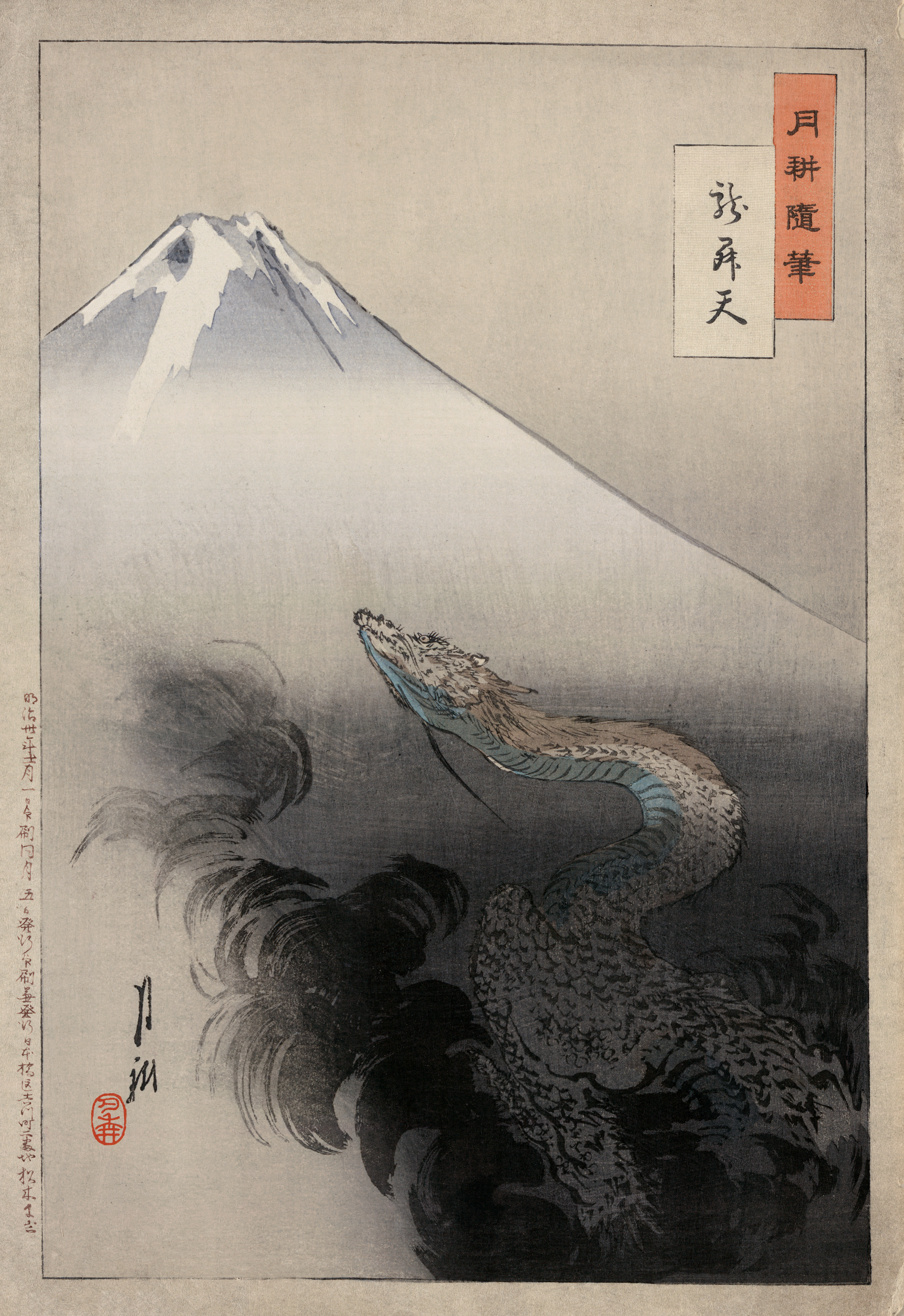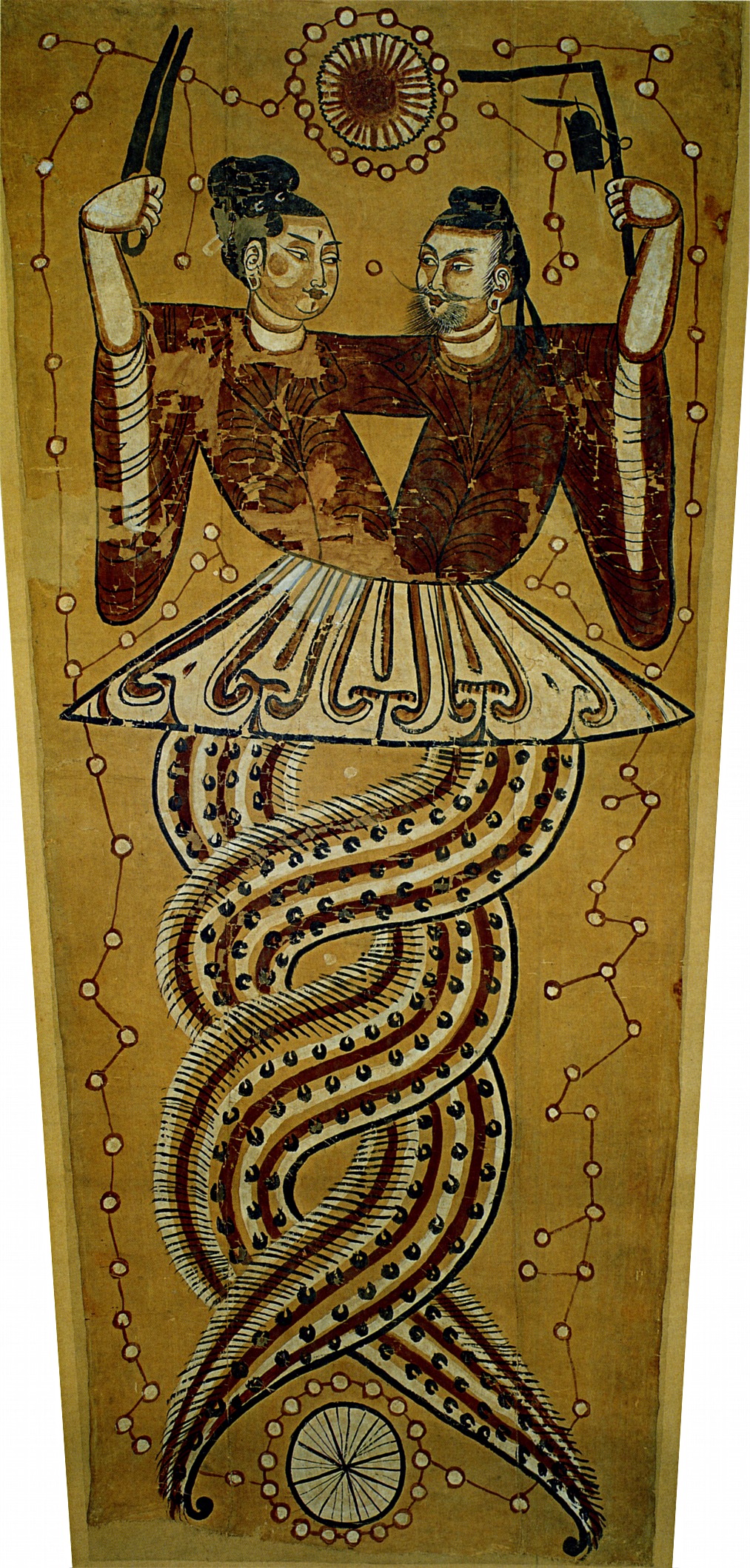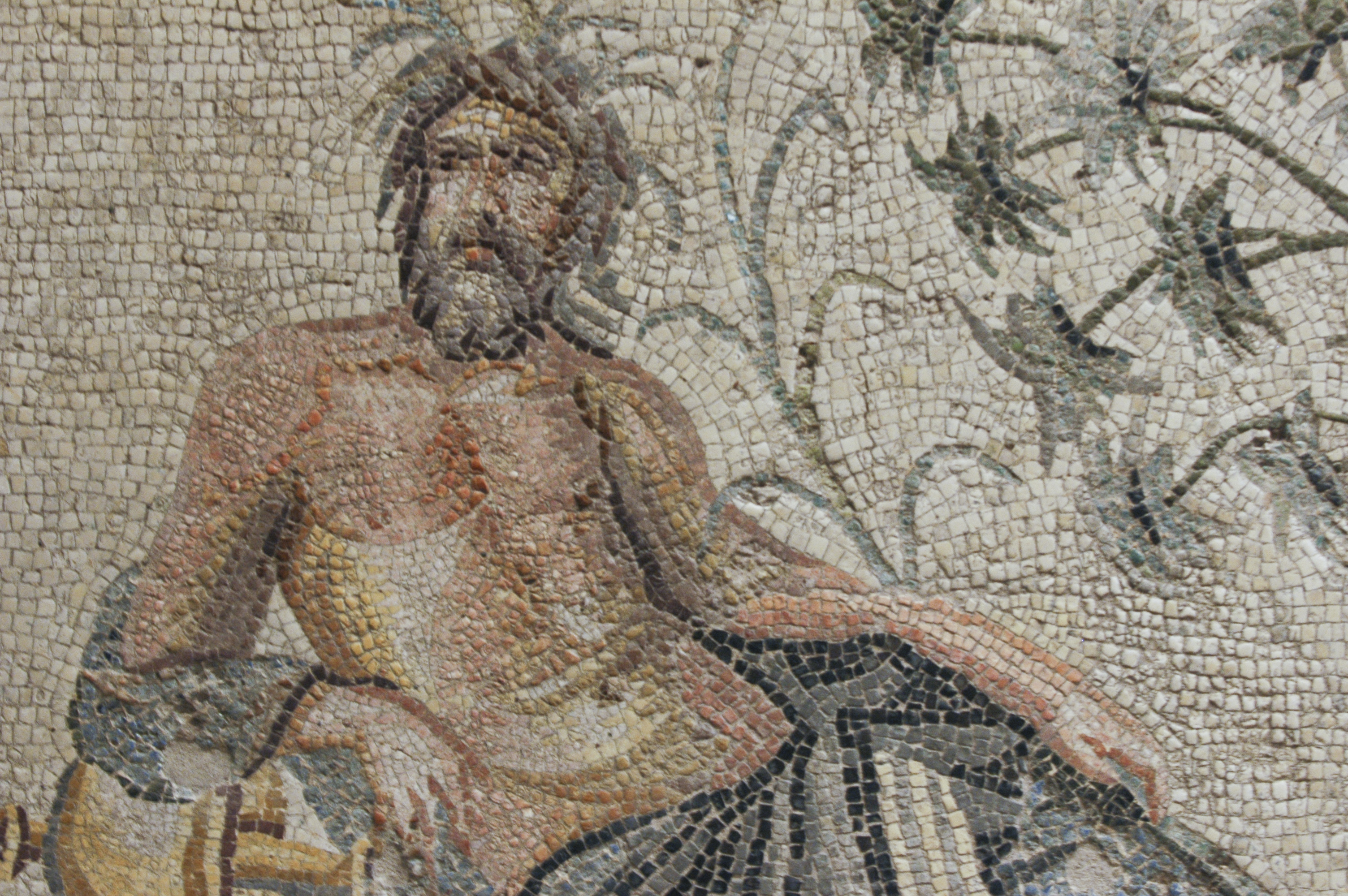|
Mizuchi
The is a type of Japanese dragon or legendary serpent-like creature, either found in an aquatic habitat or otherwise connected to water. Some commentators perceived it to have been a water deity. It is described in the ancient pseudo-chronicle '' Nihon Shoki'' and one ''Man'yōshū'' poem. Etymology In olden times pronounced ''mi-tsu-chi'', the word can be broken down to ''mi'' "water" + ''tsu'' a particle meaning "of" + ''chi'' "spirit". The ''-chi'' is glossed as a word root used only as a part of a compound word (as a suffix, etc.) Chinese character representation ''Mizuchi'' is also the Japanese transliteration for several Chinese glyphs, each glyph putatively representing a type of Chinese dragon: namely the '' jiāolóng'' ( 蛟竜; ja, kōryū, script=Latn) or "4-legged dragon", the '' qíulóng'' ( 虬竜 or 虯竜; ja, kyūryū, script=Latn) or "hornless dragon" and the '' chīlóng'' ( 螭竜; ja, chiryū, script=Latn) or "yellow dragon". F. J. Daniels caution ... [...More Info...] [...Related Items...] OR: [Wikipedia] [Google] [Baidu] |
Japanese Dragon
Japanese dragons (, ''Nihon no ryū'') are diverse legendary creatures in Japanese mythology and folklore. Japanese dragon myths amalgamate native legends with imported stories about dragons from China, Korea and the Indian subcontinent. The style and appearance of the dragon was heavily influenced by the Chinese dragon, especially the three-clawed ''long'' (龍) dragons which were introduced in Japan from China in ancient times. Like these other East Asian dragons, most Japanese ones are water deities associated with rainfall and bodies of water, and are typically depicted as large, wingless, serpentine creatures with clawed feet. Indigenous Japanese dragons The c. 680 AD ''Kojiki'' and the c. 720 AD '' Nihongi'' mytho-histories have the first Japanese textual references to dragons. "In the oldest annals the dragons are mentioned in various ways," explains de Visser, "but mostly as water-gods, serpent- or dragon-shaped." The ''Kojiki'' and ''Nihongi'' mention several a ... [...More Info...] [...Related Items...] OR: [Wikipedia] [Google] [Baidu] |
Jiaolong
''Jiaolong'' () or ''jiao'' (''chiao'', ''kiao'') is a dragon in Chinese mythology, often defined as a "scaled dragon"; it is hornless according to certain scholars and said to be aquatic or river-dwelling. It may have referred to a species of crocodile. A number of scholars point to non- southern origins for the legendary creature and ancient texts chronicle that the Yue people once tattooed their bodies to ward against these monsters. In English translations, ''jiao'' has been variously rendered as "''jiao''-dragon", "crocodile", "flood dragon", "scaly dragon", or even "kraken". Name The ''jiao'' character combines the "insect radical" , to provide general sense of insects, reptiles or dragons, etc., and the right radical ''jiao'' "cross; mix", etc. which supplies the phonetic element "''jiao''". The original pictograph represented a person with crossed legs. The Japanese equivalent term is . The Vietnamese equivalent is ''giao long'', considered synonymous to Vietna ... [...More Info...] [...Related Items...] OR: [Wikipedia] [Google] [Baidu] |
Water Deity
A water deity is a deity in mythology associated with water or various bodies of water. Water deities are common in mythology and were usually more important among civilizations in which the sea or ocean, or a great river was more important. Another important focus of worship of water deities has been springs or holy wells. As a form of animal worship, whales and snakes (hence dragons) have been regarded as godly deities throughout the world (as are other animals such as turtles, fish, crabs, and sharks). In Asian lore, whales and dragons sometimes have connections. Serpents are also common as a symbol or as serpentine deities, sharing many similarities with dragons. Africa and the Mediterranean Sub-Sahara Africa Western Niger-Congo Benin * Ezili, goddess of sweet water, beauty, and love. Dogon *Nommos, amphibious spirits that are worshiped as ancestors. Serer * Mindiss (or Mindis) is not a deity in Serer religion, but a pangool with goddess–like attributes. She is a ... [...More Info...] [...Related Items...] OR: [Wikipedia] [Google] [Baidu] |
Okayama Prefecture
is a Prefectures of Japan, prefecture of Japan located in the Chūgoku region of Honshu. Okayama Prefecture has a population of 1,906,464 (1 February 2018) and has a geographic area of 7,114 Square kilometre, km2 (2,746 sq mi). Okayama Prefecture borders Tottori Prefecture to the north, Hyōgo Prefecture to the east, and Hiroshima Prefecture to the west. Okayama is the capital and largest city of Okayama Prefecture, with other major cities including Kurashiki, Tsuyama, and Sōja. Okayama Prefecture's south is located on the Seto Inland Sea coast across from Kagawa Prefecture on the island of Shikoku, which are connected by the Great Seto Bridge, while the north is characterized by the Chūgoku Mountains. History Prior to the Meiji Restoration of 1868, the area of present-day Okayama Prefecture was divided between Bitchū Province, Bitchū, Bizen Province, Bizen and Mimasaka Province, Mimasaka Provinces. Okayama Prefecture was formed and named in 1871 as part of the large-scal ... [...More Info...] [...Related Items...] OR: [Wikipedia] [Google] [Baidu] |
Kanbun
A is a form of Classical Chinese used in Japan from the Nara period to the mid-20th century. Much of Japanese literature was written in this style and it was the general writing style for official and intellectual works throughout the period. As a result, Sino-Japanese vocabulary makes up a large portion of the Japanese lexicon and much classical Chinese literature is accessible to Japanese readers in some semblance of the original. The corresponding system in Korean is ''gugyeol'' (). History The Japanese writing system originated through adoption and adaptation of Written Chinese. Some of Japan's oldest books (e.g., '' Nihon Shoki'') and dictionaries (e.g., ''Tenrei Banshō Meigi'' and ''Wamyō Ruijushō'') were written in ''kanbun''. Other Japanese literary genres have parallels; the ''Kaifūsō'' is the oldest collection of "Chinese poetry composed by Japanese poets". Burton Watson's English translations of ''kanbun'' compositions provide an introduction to this literary fi ... [...More Info...] [...Related Items...] OR: [Wikipedia] [Google] [Baidu] |
Calabash
Calabash (; ''Lagenaria siceraria''), also known as bottle gourd, white-flowered gourd, long melon, birdhouse gourd, New Guinea bean, Tasmania bean, and opo squash, is a vine grown for its fruit. It can be either harvested young to be consumed as a vegetable, or harvested mature to be dried and used as a utensil, container, or a musical instrument. When it is fresh, the fruit has a light green smooth skin and white flesh. Calabash fruits have a variety of shapes: they can be huge and rounded, small and bottle-shaped, or slim and serpentine, and they can grow to be over a metre long. Rounder varieties are typically called calabash gourds. The gourd was one of the world's first cultivated plants grown not primarily for food, but for use as containers. The bottle gourd may have been carried from Asia to Africa, Europe, and the Americas in the course of human migration, or by seeds floating across the oceans inside the gourd. It has been proven to have been globally domesticated (an ... [...More Info...] [...Related Items...] OR: [Wikipedia] [Google] [Baidu] |
Yodo River
The , also called the Seta River (瀬田川 ''Seta-gawa'') and the Uji River (宇治川 ''Uji-gawa'') at portions of its route, is the principal river in Osaka Prefecture on Honshu, Japan. The source of the river is Lake Biwa in Shiga Prefecture to the north. The Yodo River, usually called the Seta River in Shiga Prefecture, begins at the southern outlet of the lake in Ōtsu. There is a dam there to regulate the lake level. Further downstream, the Seta flows into Kyoto Prefecture and its name changes to the Uji River. It then merges with two other rivers, the Katsura River and the Kizu River in Kyoto Prefecture. The Katsura has its headwaters in the mountains of Kyoto Prefecture, while the Kizu comes from Mie Prefecture. From the three-river confluence, the river is called the Yodo River, which flows south, through Osaka, and on into Osaka Bay. In Osaka, part of the river has been diverted into an artificial channel; the old course in the heart of Osaka is called the Kyū-Yodo ... [...More Info...] [...Related Items...] OR: [Wikipedia] [Google] [Baidu] |
Musashi Province
was a province of Japan, which today comprises Tokyo Metropolis, most of Saitama Prefecture and part of Kanagawa Prefecture. It was sometimes called . The province encompassed Kawasaki and Yokohama. Musashi bordered on Kai, Kōzuke, Sagami, Shimōsa, and Shimotsuke Provinces. Musashi was the largest province in the Kantō region. History Musashi had its ancient capital in modern Fuchū, Tokyo, and its provincial temple in what is now Kokubunji, Tokyo. By the Sengoku period, the main city was Edo, which became the dominant city of eastern Japan. Edo Castle was the headquarters of Tokugawa Ieyasu before the Battle of Sekigahara and became the dominant city of Japan during the Edo period, being renamed Tokyo during the Meiji Restoration. ''Hikawa-jinja'' was designated as the chief Shinto shrine (''ichinomiya'') of the province; and there are many branch shrines. The former province gave its name to the battleship of the Second World War. Timeline of important events * ... [...More Info...] [...Related Items...] OR: [Wikipedia] [Google] [Baidu] |
Kawachi Province
was a province of Japan in the eastern part of modern Osaka Prefecture. It originally held the southwestern area that was split off into Izumi Province. It was also known as . Geography The area was radically different in the past, with Kawachi Bay and lake dominating the area over what is now land. ''Chiku'' Kawachi was divided into three : , , and . * The northern county comprised the modern Hirakata, Neyagawa, Kadoma, Moriguchi, Shijōnawate, Daitō, and Katano, Osaka areas. * The central county comprised the modern Higashiōsaka, Yao, and Kashiwara, Osaka areas. * The southern county comprised the modern Sakai's eastern part (all of Higashi-ku and Mihara-ku, and part of Kita-ku), Matsubara, Habikino, Fujiidera, Tondabayashi, Kawachinagano, Ōsakasayama, and Minamikawachi District areas. Development Kawachi province was established in the 7th century. On 11 May 716, the Ōtori, Izumi, and Hine districts were split off to form . In December 720, the and district ... [...More Info...] [...Related Items...] OR: [Wikipedia] [Google] [Baidu] |
Takahashi River
The is a Class A major river in the western part of Okayama Prefecture. It acts as the main drainage for the Takahashi River Drainage System, and is one of the three main drainage rivers in Okayama Prefecture (the others being the Yoshii River and the Asahi River). Description The Takahashi River originates from Akechi Pass near Hanamiyama in Tottori Prefecture, above sea level. It flows through the cities of Niimi, Takahashi, Sōja, and Kurashiki, eventually flowing into the Mizushimanada area of the Inland Sea. The mouth is located between the Mizushima and Tamashima areas of Kurashiki. Reconstruction and repairs in 1907 created the eastern and western branches of the Takahashi River. Major tributaries *: Flows from the northeast area of Hiroshima Prefecture to the western part of Okayama Prefecture is a Prefectures of Japan, prefecture of Japan located in the Chūgoku region of Honshu. Okayama Prefecture has a population of 1,906,464 (1 February 2018) and has a geographi ... [...More Info...] [...Related Items...] OR: [Wikipedia] [Google] [Baidu] |
Hebo
Hebo () is the god of the Yellow River (''Huang He''). The Yellow River is the main river of northern China, one of the world's major rivers and a river of great cultural importance in China. This is reflected in Chinese mythology by the tales surrounding the deity Hebo. The descriptive term ''Hebo'' is not the deity's only name, and its worship is geographically widespread. Some of the character ascribed to Hebo is related to the character of the Yellow River itself: a river that has been described as one of China's greatest assets as well as one of the greatest sources of sorrow. Some of the world's greatest floods accompanied by massive loss of human life have been due to the Yellow River overflowing its banks and even shifting course and establishing a new river bed. The Yellow River has also been one of the major agricultural sources for irrigation of farms that have provided for the dietary needs of the population at least from the cradle of Chinese civilization through the ... [...More Info...] [...Related Items...] OR: [Wikipedia] [Google] [Baidu] |







